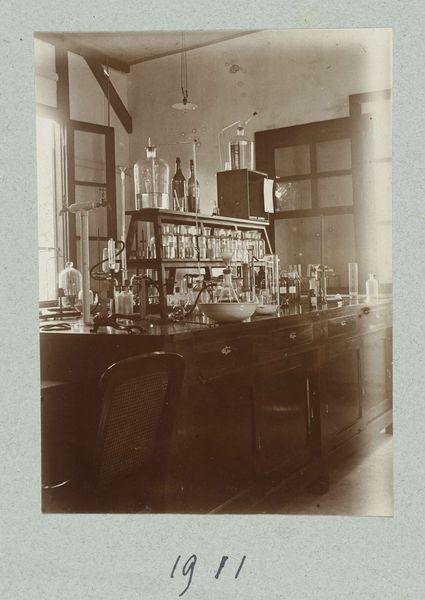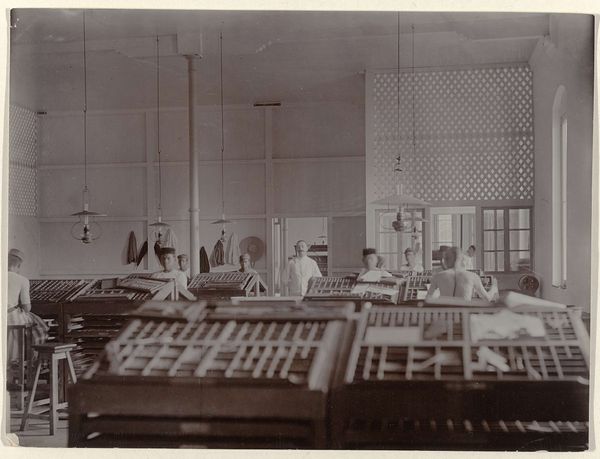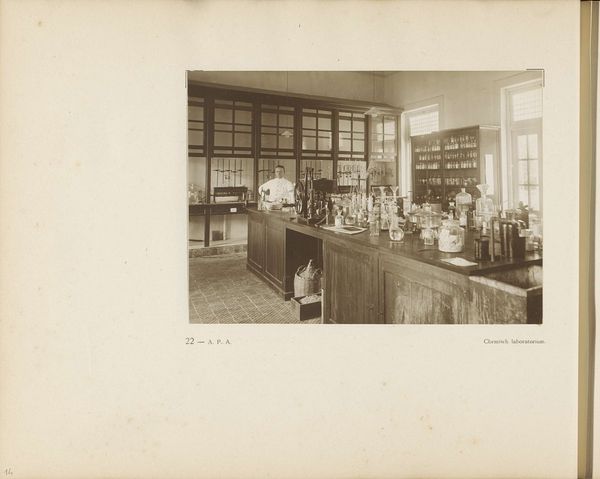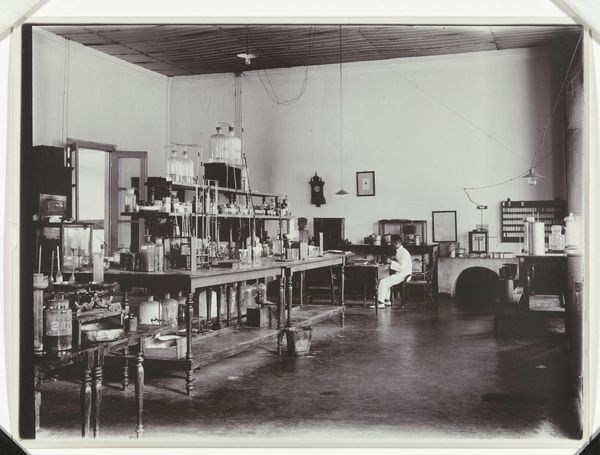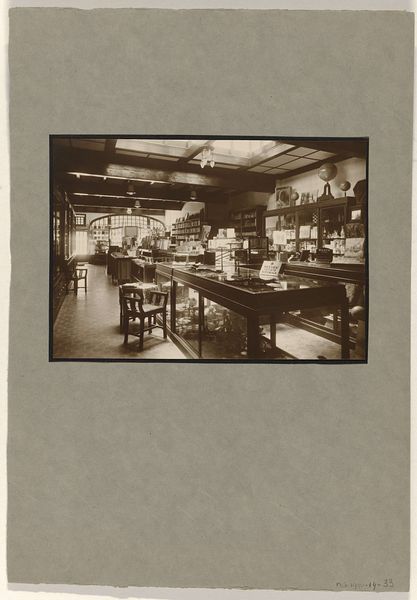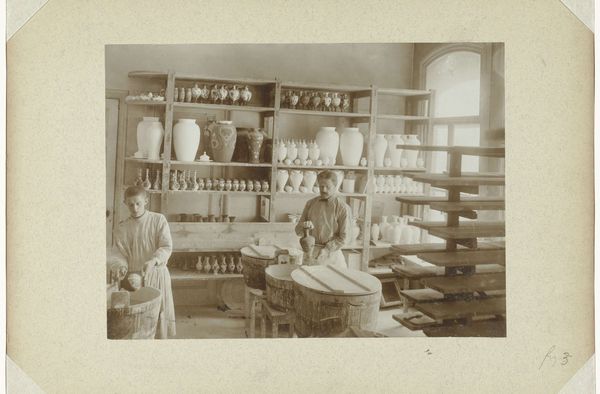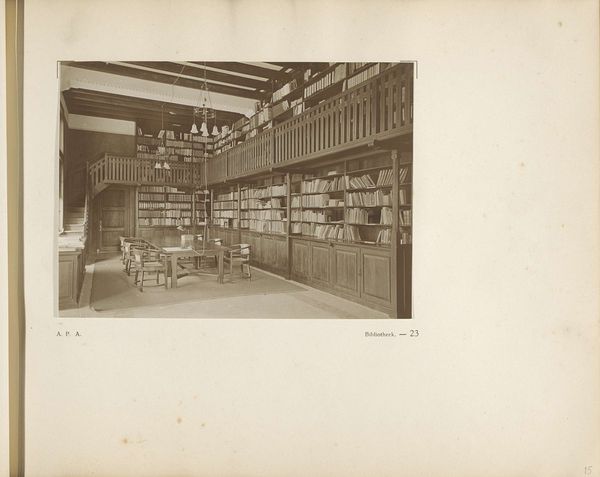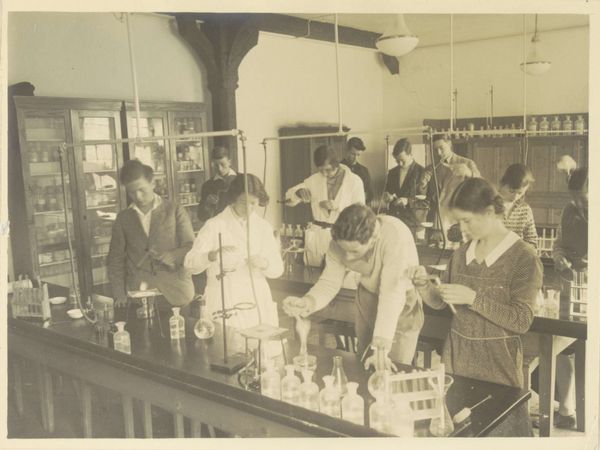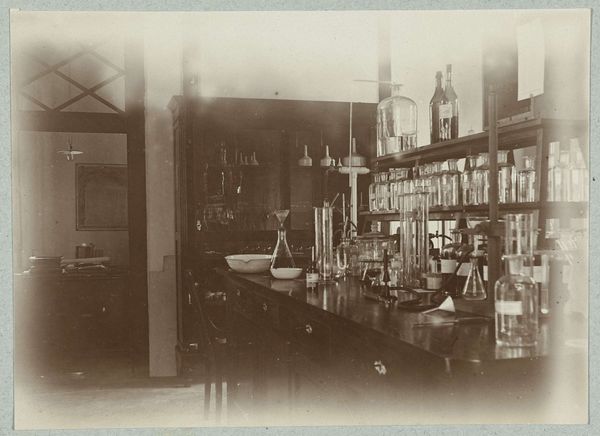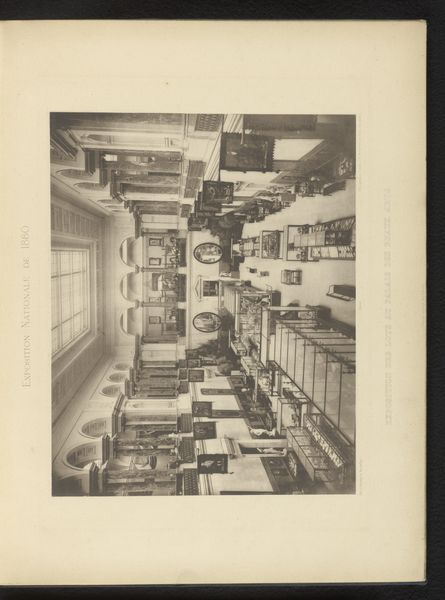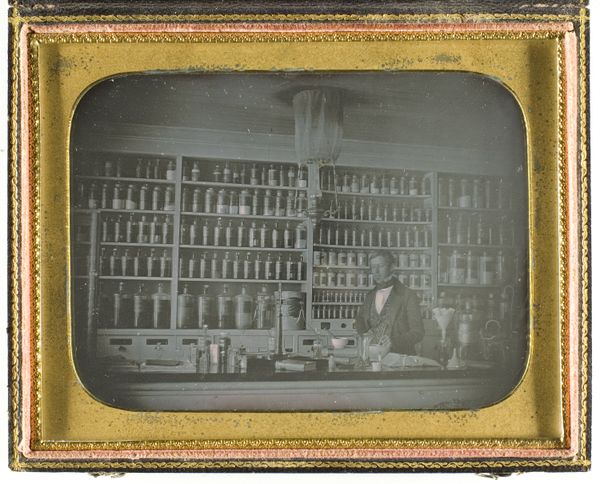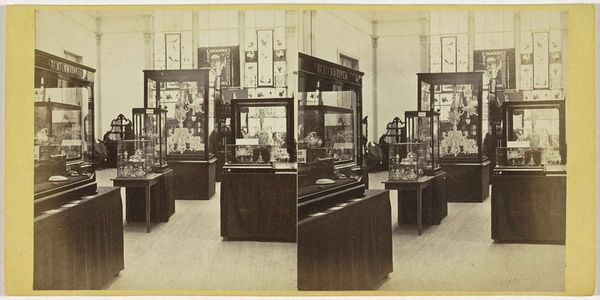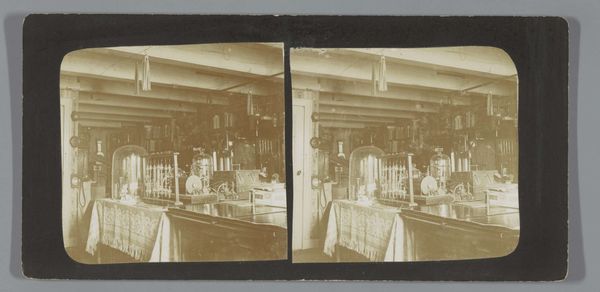
photography
#
photography
#
orientalism
#
genre-painting
#
realism
Dimensions: height 164 mm, width 225 mm, height 239 mm, width 220 mm
Copyright: Rijks Museum: Open Domain
Editor: This is a photograph titled "Toonkamer van de porseleinfabriek Rozenburg," taken around 1890 by Ritscher & Landsman. Looking at the composition, with its array of porcelain pieces, I’m struck by how it captures a moment of commercial display with artistic intention. What elements stand out to you, considering the form and structure of the image itself? Curator: Focusing on the photographic medium, we see how the interplay of light and shadow defines the textures and forms of the porcelain. The composition employs a linear perspective, guiding the eye through rows of plates and shelves filled with vases and decorative objects. Note the artist’s control over the grayscale, creating subtle variations in tone. Do you see how the arrangement of objects generates rhythm and balance within the frame? Editor: Yes, now that you point it out, there is definitely a rhythm. The repeated shapes of the plates and vases, create visual echoes that pull the whole thing together. But why do you focus primarily on those technical features instead of cultural context or representation? Curator: While contextual information is helpful, my focus stems from observing how the photograph operates as a visual structure. The careful orchestration of shapes, tones, and lines contributes to the photograph's aesthetic meaning, regardless of what might be "represented". The realism in how the objects are portrayed gives them a different, interesting texture as it uses an innovative medium of the time to capture a very mundane commercial setting. Editor: So, it's about understanding the language of the photograph itself, and how its intrinsic qualities give rise to meaning. It makes me think more critically about composition now. Curator: Precisely. The interplay between subject and form in the photograph opens doors to understanding visual design. I hope that we will be able to carry this knowledge to other pieces, regardless of their historical or commercial context.
Comments
No comments
Be the first to comment and join the conversation on the ultimate creative platform.

